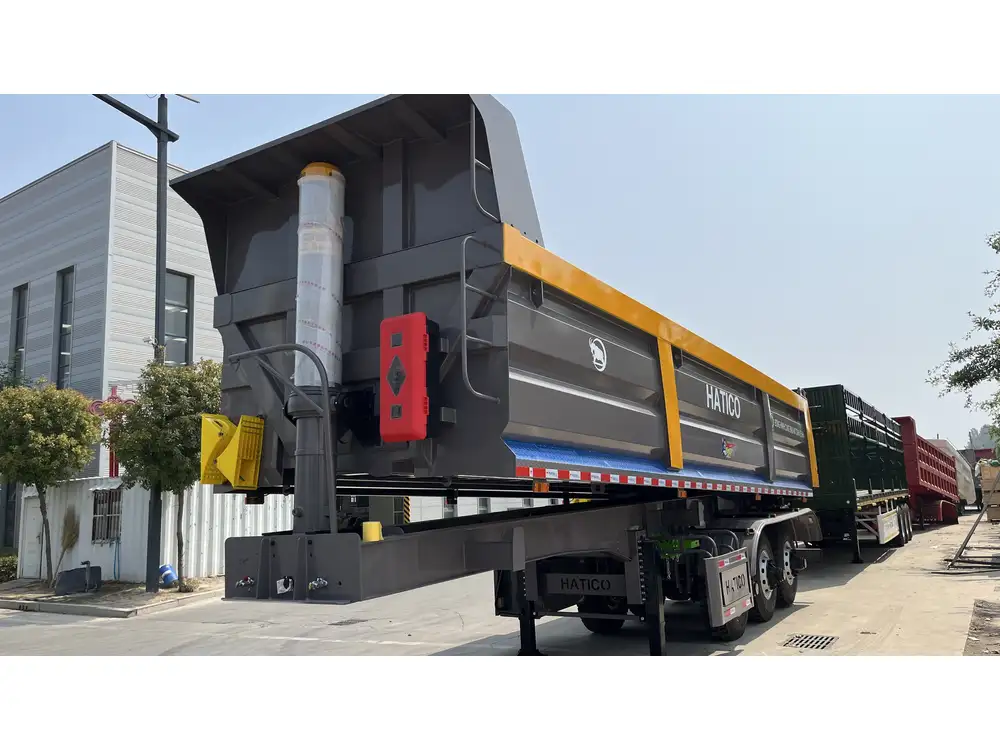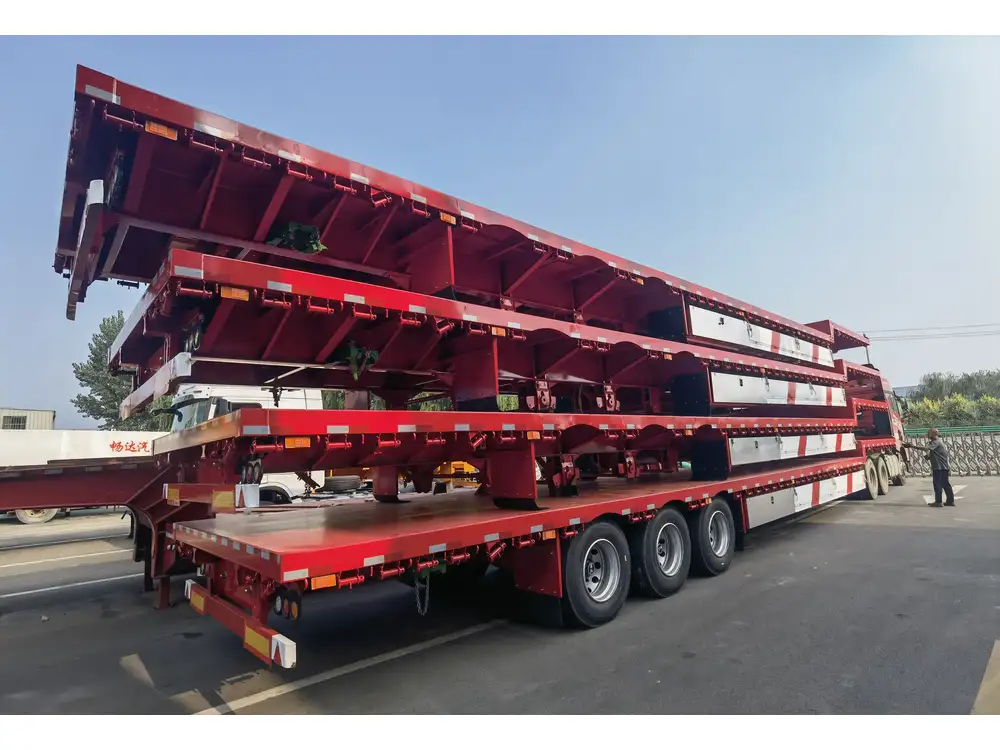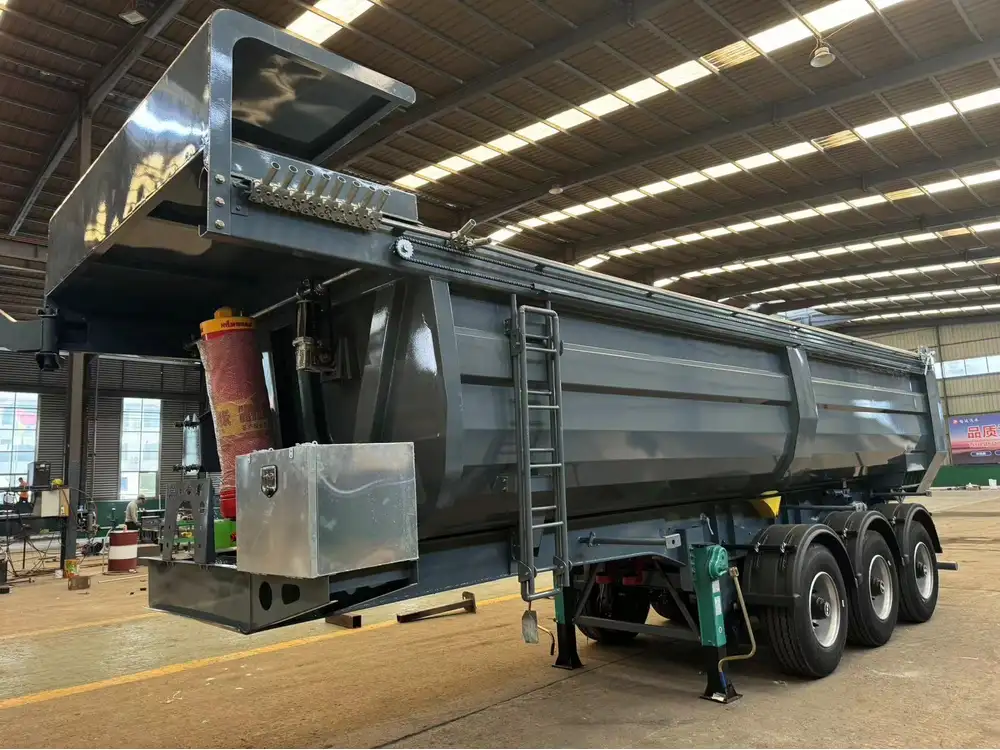Navigating the world of semi-trailers can be challenging, especially when it comes to understanding dimensions. One essential measurement that both buyers and operators must grasp is the height of a semi-trailer. This metric not only plays a crucial role in operational efficiency but also affects compliance with regulations and overall load management.
In this comprehensive guide, we will explore the standard height of semi-trailers, factors influencing these dimensions, and how to choose the right trailer based on your specific needs.
Semi-Trailer Height: A Core Dimension
What Is the Standard Height of a Semi-Trailer?
The typical height of a semi-trailer varies based on its classification and intended use. Generally, the average height ranges from 13.5 to 14.5 feet (approximately 162 to 174 inches) when unloaded. Specific dimensions might vary according to the trailer type, such as:
| Trailer Type | Average Height (Feet) | Average Height (Inches) |
|---|---|---|
| Standard Dry Van | 13.5 – 14.5 | 162 – 174 |
| Refrigerated Trailer | 13.6 – 14.5 | 163 – 174 |
| Flatbed | 11.5 – 13.5 | 138 – 162 |
| Lowboy | 10.5 – 12.0 | 126 – 144 |
| Container Chassis | 13.0 – 14.0 | 156 – 168 |
It is imperative to note that while these figures represent common heights, there may be exceptions based on specific manufacturer designs or requirements.

Regulatory Restrictions and Compliance
When discussing semi-trailer heights, one must also consider regulatory standards that govern maximum allowable heights on public roads. In the United States, for example, the Federal Highway Administration (FHWA) sets a maximum height of 13.5 feet for commercial vehicles, but individual states may have different regulations regarding height limits. Here are some key points:
- Federal Laws: Max height set at 13.5 feet for interstate highways.
- State Variations: Certain states allow heights up to 14.5 feet; however, permits typically are required.
- Overpasses and Clearance: Ensure routes taken remain compliant for high loads to avoid accidents and damages.
Factors Influencing Semi-Trailer Height
Design and Purpose
The intended use of a semi-trailer influences its design and height. For example, refrigerated trailers are often slightly taller due to added insulation and cooling units, whereas flatbeds tend to be lower to the ground, facilitating easier loading and unloading.

Load Specifications
Payload considerations also dictate semi-trailer dimensions. The heavier the load, the lower the trailer may be designed to keep the center of gravity stable, ensuring safe transportation.
Manufacturer Variations
Different manufacturers may produce semi-trailers with varying specifications. When selecting a semi-trailer, it’s essential to compare different models and their height profiles. Custom designs can also be requested based on business needs.
Choosing the Right Semi-Trailer: Key Considerations

1. Assess Your Cargo Needs
Determining the type of cargo transported is paramount. Considerations include:
- Height: Does your cargo fit within standard trailer heights?
- Weight: Is your load within legal weight limits for your chosen height?
- Volume: Ensure that trailer dimensions meet cargo volume requirements.
2.Evaluate the Delivery Route
Understanding the logistics of your delivery routes can save headaches down the line. Evaluate:
- Clearances: Identify any low overpasses, bridges, or structures that might obstruct your height.
- State Regulations: Research state-specific regulations for transportation and height allowances.
3. Choose the Right Type of Trailer
Selecting the appropriate trailer type should align not only with the height of your cargo but also its characteristics:
| Trailer Type | Best Use Cases |
|---|---|
| Standard Dry Van | General freight, high-volume shipments. |
| Refrigerated Trailer | Perishable goods requiring temperature control. |
| Flatbed | Over-sized, irregular loads. |
| Lowboy | Heavy equipment, construction machinery. |
| Container Chassis | Shipping containers, international transport. |

Innovative Designs in Semi-Trailer Heights
The industry is evolving, with advancements in trailer designs focused on height and efficiency. Recent innovations include:
- Adjustable Suspension Systems: These allow operators to adjust trailer height for various loads and road conditions.
- Telescopic Trailers: Designed for loads that vary in length and height, providing adaptability.
- Aerodynamic Features: Modern trailers feature designs to mitigate air resistance, which may slightly alter height measurements due to added fairings or skirts.
Maintenance and Safety Considerations for Trailer Heights
Height can significantly impact the safety and maintenance of semi-trailers. Here are vital safety tips and maintenance checks:
Regular Inspections
- Inspect for wear and tear on suspension systems. Defective systems can affect load height and stability.
- Regularly check trailer lights and visibility aids, essential for taller vehicles on the road.

Load Distribution
- Evenly distribute cargo to maintain a stable center of gravity, especially in taller designs.
- Utilize proper tie-down and securing methods for preventing load shifting during transit.
Training for Operators
Educate operators on height awareness, ensuring they are mindful of roads, bridges, and parking areas that may present challenges. Regular training sessions can improve safety standards and operational efficiency.
FAQs about Semi-Trailer Heights

What is the maximum height allowed for semi-trailers on highways?
The maximum legal height is generally 13.5 feet on interstate highways in the US, but regulations may differ by state.
Can I modify the height of my semi-trailer?
Yes, some options such as customizing the suspension system or using adjustable mechanisms can change heights, but modifications should comply with local regulations.
Do high semi-trailers affect fuel economy?
Yes, taller trailers can impact aerodynamics and may lead to increased fuel consumption. It’s essential to balance height with efficiency when selecting a trailer.

Conclusion: Making Informed Decisions on Semi-Trailer Heights
Understanding the standard height of semi-trailers and its implications is vital for any trucking business or operation reliant on these vehicles. From regulatory compliance to choosing the right trailer type for your unique situation, every aspect must be meticulously considered to ensure optimal performance and safety.
Whether transporting standard goods or specialized freight, ensuring that your semi-trailer meets your cargo requirements while adhering to height regulations is essential for efficient and compliant operations.
In summary, by grasping the intricate dimensions, laws, and operational factors of semi-trailers, operators can enhance their logistical strategies, streamline their fleet operations, and bolster overall efficiency.
By keeping these insights in mind, you can navigate the complexities of semi-trailers with confidence and precision, laying the foundation for successful transportation solutions.



